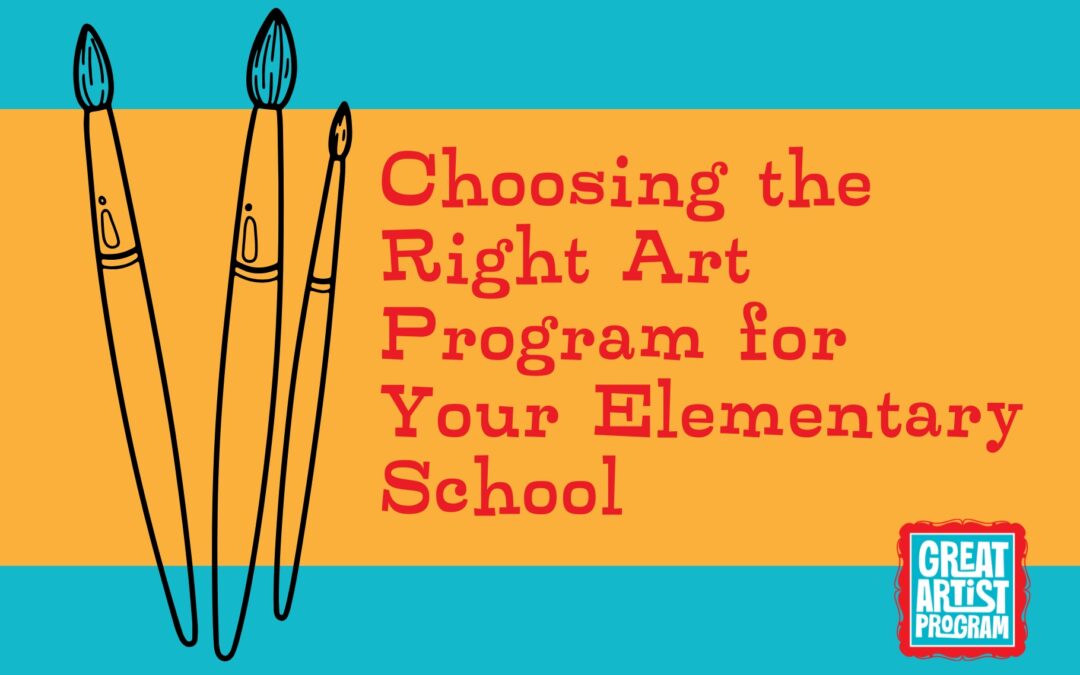Art Programs for Elementary Schools: Choosing the Right One
Art education is an integral part of a well-rounded elementary school curriculum. It fosters creativity, confidence, critical thinking, self-expression, and emotional outlet for these young minds. However, finding the right art programs for elementary schools can be a difficult decision. When looking for and choosing an art elementary program that aligns with your school’s goals and benefits your students consider the following:
Educational Objectives
Before choosing an art program, it’s essential to define your educational objectives. What do you want your students to gain from their art education? Are you aiming to develop their creativity, build their confidence, or expose them to various art forms and techniques? Understanding your goals will help you choose a program that aligns with your vision. The good news, is that Great Artist Program provides ALL that and more. We pride ourselves on having elementary art education that not only teaches students about Great Artists and art history, but promotes confidence and expression.
Curriculum
Review the curriculum of the art program carefully. It should cover a wide range of artistic styles, techniques, and mediums. A well-rounded curriculum will ensure that students get exposure to different aspects of art and can discover their areas of interest. Additionally, some art education and implementation is better served to an older student population, which is why our elementary art education is tailored to young minds so that it’s digestible content and easy-to-make art.
Instructors’ Qualifications
The instructors leading the program play a crucial role in its success. Look for programs with experienced and passionate art educators who can inspire and guide your students effectively and have both experience in art history, art creation, and elementary-aged teaching. Expert instructors can make a significant difference in the quality of education.
Accessibility in Elementary Art Programs
Consider the accessibility of the art program. Is it available in a format that suits your school’s needs? Some programs offer in-person classes, while others provide virtual or hybrid options. Evaluate which format works best for your school’s schedule and resources. The benefit of virtual classes is that they are convenient and affordable.
Engagement and Interactivity
Engagement is key to effective learning, especially for elementary school students. A good art program should incorporate interactive elements, such as hands-on projects, easy-to-follow demonstrations, opportunities for students to collaborate with their peers, and learning made fun!
Community and Support in Elementary Art Programs
A supportive art community can greatly enhance the learning experience. Consider programs that foster a sense of belonging among students, encourage peer interaction, and provide resources for both students and teachers. Additionally, a business that provides excellent customer service and help when things get tricky.
Budget and Resources
Evaluate the cost of the art program and ensure it aligns with your school’s budget. Additionally, check if the program requires specific art supplies and materials and assess the feasibility of providing them. The best part about using a virtual art education program is that you don’t have to budget the cost of a full-time teacher, instead you just need to purchase the program and use it when it works for your student’s schedules.
Reviews and Recommendations
Research the reputation of the art program by reading reviews and seeking recommendations from other schools or educational professionals. A program with a positive track record is likely to deliver quality education.
Flexibility
Finally, consider the flexibility of the program. Does it accommodate the unique needs of your school, such as scheduling or accommodating students with diverse learning styles?
Choosing the right art program for your elementary school is a crucial decision that can greatly impact your students’ development. By carefully considering factors such as educational objectives, curriculum, instructors’ qualifications, engagement, and quality of learning, you can make an informed choice that enhances your students’ creativity and enriches their educational experience. Remember that the right art program can inspire a lifelong love for art and foster essential skills that will benefit students in various aspects of their lives.
Learn More About Our Virtual Art Education
Laurie White
Founder of Great Artist Program
As a mom of seven, and educator for over three decades, Laurie White loves to bring visual art education to the home and classroom. She believes that everyone is an artist and everyone can learn how to draw. By studying, copying, and learning from the great artists of the past, we can develop the great artists of the future.


Recent Comments